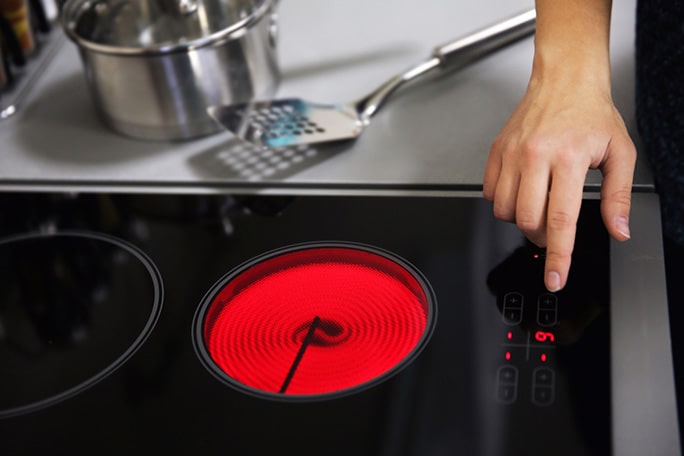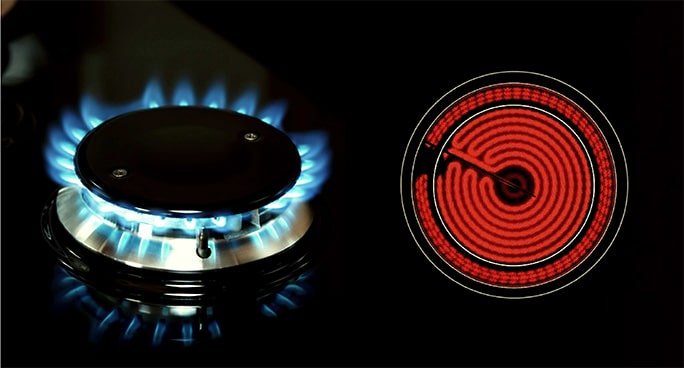Infrared Cooker: Everything you Need to Know About it
Choosing a cooktop for your kitchen might not be as easy as you thought it is. Nowadays, there are so many options on the market, including gas stoves, induction cooktops, and even infrared cookers. In this article, we are going to focus on infrared cooking and all the perks of using an infrared cooker. Besides the main benefits of infrared cooking, we are also going to look into potential disadvantages of using this type of cooktop.
Before we move onto details of the topic, keep in mind that many people confuse infrared cookers for induction stove tops. These two types of cooktops are not the same thing and we are going to explain this in one of the following sections.

What is an Infrared Cooker and How Does it Work?
Infrared cooktops look similar to induction stovetops on the surface but they are much different inside. Infrared cookers are made of halogen lamps and metals/coils that generate heat. The infrared radiation transfers the heat to the pot, which allows you to cook on top of it. Do not let the word radiation scare you, as the infrared radiation levels present in these types of cooktops are not harmful to health just like a microwave oven.
The great thing about infrared cookers is that they are highly energy-efficient and very easy to use. The halogen lamps transfer the heat through the cooktop, which is why the surface of an infrared cooker will light up red when in use. Induction stovetops, on the other hand, do not light up when you turn them on.
Moreover, infrared cooktops do not require a special type of cookware to work. If you are familiar with induction stovetops, you probably know that you cannot use all the types kind of material on this type as some Glass, copper, and aluminum metal vessels will not work on an induction stovetop.
An infrared cooker, on the other hand, allows for more freedom and versatility in the kitchen, as you can use any type of cookware on it. The way these cooktops work is simple: the heating element, in this case the coils, create infrared rays that travel through the micro-crystalline panel to concentrate the heat at the bottom of the pan.
Infrared cookers allow for fast heating and precise temperature control. Since this technology is growing in popularity around the world, we can expect new innovations in the kitchen space in the upcoming years.
Pros:
- Even heat distribution
- Portable cookers available
- Compatible with any type of pots and pans
- Long lifespan
Cons:
- Takes a long time to cool down after use
- Slower heating compared to induction stoves, faster compared to gas alternatives.
What are the Main Benefits of Infrared Cooking?
When it comes to cooking, infrared cookers offer similar results to induction cooktops. However, there are some significant benefits you should keep in mind, including the following:
Even Heat Distribution
The great thing about infrared cookers is that they will cook by producing heat evenly. You will not have to deal with hot or cold spots on the plate so your meals will be prepared with better heat consistency. Moreover, infrared cooktops use heat efficiently and they will not heat up your room much, while cooking.
Portability
There are many types of portable infrared cooker units on the market. These will come in handy on trips and vacations, even though you have to keep in mind that you are going to need a source of electricity in order to use this type of cooker on the go.
Compatibility with Pots and Pans
Possibly the best benefit of infrared cooktops compared to induction ones is that these cookers are compatible with any type of cookware. When using an induction cooktop, you need to use conductive cookware that has an induction base However, an infrared cooker doesn’t need any such and allows you to use any type of cookware you have in the kitchen so you don’t have to spend extra money on pots and pans.
Long Lifespan
Lastly, infrared cookers have a longer lifespan compared to induction cooktops. While induction cooktops last five to six years on average, an infrared cooktop can serve you up to ten years. However, the exact lifespan will depend on the manufacturer and the quality of the product, as well as how well you maintain it.
Are there any disadvantages?
Just like any appliance, even infrared cooktops come with a couple of disadvantages listed below.
Cooling Time
Induction stovetops are considered better than infrared cookers in terms of use because they cool down faster. Infrared cooktops take a while to cool down because they heat up the surrounding plate more than induction stove tops do.
Heating Speed
Infrared cookers are slower to heat up because they first have to warm up the heating element. Induction stoves heat up faster, although infrared cookers are still more efficient than the gas alternatives.
Summary
Infrared cooktops are becoming popular day by day as an alternative to gas and induction stoves because of their heat efficiency and versatility. These cooktops allow you to use different types of pots and ensure even heating at all times. Even though they are slower to heat up than induction tops, infrared cookers are worth considering when choosing your kitchen equipment.





